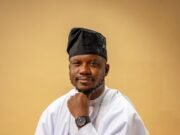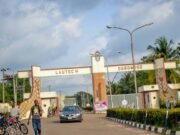About 24 hours to the end of 2020, the Seyi Makinde-led government of Oyo state has given an approval that allows for crossover services in churches across the state even though the Nigeria Center for Disease Control (NCDC) advises citizens to avoid large gatherings which it described as super-spreaders for the COVID-19 pandemic.
As Year 2020 draws to an end, we decided to take a closer look at how serious the COVID-19 pandemic has been in Ibadan based on comprehensive and official publicly available data which is the COVID-19 situation report of the COVID-19 pandemic for Week 52 published by the NCDC.
Data showed Oyo state accounted for nearly 5% of all confirmed cases of COVID-19 in Nigeria. In other words, nearly one in twenty confirmed cases of COVID-19 is in Oyo state which is lower than that of Lagos that account for over 34% of all confirmed cases in Nigeria or Abuja (over 13%).
On the other hand, Oyo state’s contribution to the national COVID-19 statistics is higher than that of Delta state which only accounts for about 2% of Nigeria’s COVID-19 pandemic.

Among the states in the southwest region of Nigeria, Lagos accounts for about 73% of all confirmed cases. Oyo state on the hand accounted for about 36% of all confirmed cases across all the states in the southwest except Lagos. Oyo state is followed by Ogun state (22%), Ondo (16%) and Kwara (13%).
COVID-19 deaths: Where Oyo state stands
According to the NCDC, while Nigeria has confirmed a total of 85,560 as at December 29, it has also recorded a total of 1,267 deaths within the same period suggesting that across the country, 1.5% of all the positive cases resulted in death. This value varies from one state to another.
Since the outset of the pandemic in Oyo state, a total of 46 deaths have been recorded making Oyo the state with the eighth highest number of COVID-19-related deaths in Nigeria. However, the state has one of the lowest death rates among individuals with confirmed cases of COVID-19 in the state. With a case fatality rate (CFR) of 1.2%, Oyo state has the sixth lowest CFR in Nigeria for COVID-19.

Across the country, Lagos has the lowest CFR with death recorded among 0.8% of all the confirmed cases while the rate is highest in Kogi where 40% of positive cases resulted in death.

COVID-19 patients on admission in Oyo state
Across Nigeria, about 14.4% of all confirmed cases of COVID-19 in the country are on admission. But in Oyo state, only 486 persons that tested positive are still on admission, representing 12.4% of all confirmed cases in the state which is lower than the national average.
Among the five states with the highest number of confirmed cases of COVID-19, FCT leads with about 38% of all confirmed cases still active. Oyo state has the second rate of active cases, followed by Lagos and Plateau states while Kaduna has the lowest with only about 1 in 10 of confirmed cases of COVID-19 in the state still active.
State of COVID-19 testing in Oyo state
According to official data provided by the NCDC, as at midnight 27 December 2020, Nigeria has conducted 935,037 COVID-19 tests. It also revealed that in Oyo state, a total of 30,579 tests have been conducted in the same period. In other words, COVID-19 tests conducted in Oyo state is only about 3% of the total tests conducted in the country.

Lagos state has conducted the highest number of COVID-19 tests in Nigeria, accounting for up to 25% of the total number of COVID-19 tests carried out in Nigeria. Lagos is followed by the FCT (Abuja) where 119,843 tests have been conducted within the same period representing nearly 13% of all COVID-19 tests conducted in Nigeria.
Across Nigeria, Oyo state has conducted the eighth highest number of COVID-19 tests – covering only about 0.5% of its population. For the state to test 1% of its population, it would be need to double the number of tests conducted already.
Between 21 and 27 December 2020, a total of 1,534 tests were conducted in the state suggested a daily average of about 220 tests. Going at this rate, the state will need about 139 days for it to be able to conduct 30,579 additional COVID-19 tests. In order words, to expand its testing coverage to 1% of the population, the state would either increase and expand its COVID-19 testing capability or wait till late May 2021 going at the current pace.
Ready to move on
While there is still need to take precautionary measures and community testing to safely reopen the state, the state government is taking steps to rollback initial precautionary measures and fully reopen the state’s economy as early as January 2021.
On December 30, the state government revealed that from January 2020, public and private schools will resume normal classes thus putting an end to staggered classes as from next academic session — a measure that was taken to reduce the number of students in a class thus achieving some form of social distancing although it meant teachers would stay longer in school and teach more classes.
I wish to remind all stakeholders of the staggered attendance of classes during the first term and that the second term 2020/2021 Academic Session will commence from Monday 11 January, 2021. “Consequent upon the above, all Public and Private Schools (Nursery, Primary, Secondary and Technical Colleges) in the State are to resume normal classes
Oyo State Commissioner for Education, Barrister Olasunkanmi Olaleye
Ibpulse































